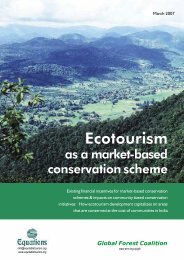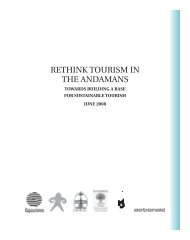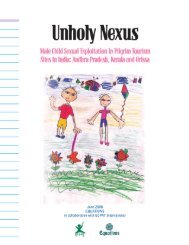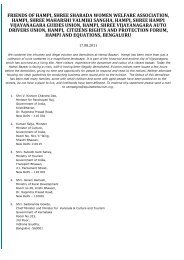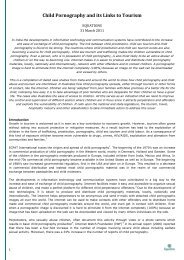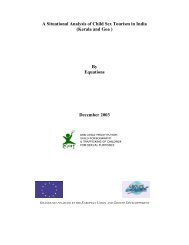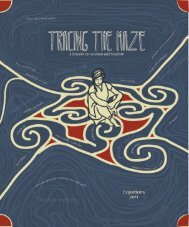Nilgiris Biosphere Reserve - Equitable Tourism Options
Nilgiris Biosphere Reserve - Equitable Tourism Options
Nilgiris Biosphere Reserve - Equitable Tourism Options
You also want an ePaper? Increase the reach of your titles
YUMPU automatically turns print PDFs into web optimized ePapers that Google loves.
Flora:<br />
The predominant vegetation of the park is southern tropical, moist, mixed<br />
deciduous type with a substantial eastern portion integrating into dry<br />
deciduous type. The upper tree canopy is dominated by Tectonia grandis,<br />
Dalbergia latifolia, Pterocarpus marsupium, Lagerstroemia lanceolata,<br />
Anogeissus latifolia, Adina cordifolia, Boambax malabaricum, Ficus, and<br />
others. The lower canopy has species such as Kydia calycina, Emblica<br />
officinalis, Gmelina arborea, etc. Several shrubs belonging to Solanum,<br />
Desmodium and Helicteres family are also found but weedy shrubs like<br />
Eupatorium and Lantana dominate the area.<br />
Fauna:<br />
The important predators and carnivora in the park are the tiger, leopard,<br />
wild dog, sloth bear and hyena. The herbivores found in the park areas are<br />
the spotted deer, sam bar, barking deer, four-horned antelope, gaur, wild<br />
boar and elephant. Other mammalians include the common langur, bonnet<br />
macaque, civet cat, jungle cat, leopard-cat, mongoose, giant flying squirrel,<br />
common otter, jackal, mouse deer, hare and pangolin. Over 250 varieties of<br />
birds are also found at the park.<br />
The biodiversity pressures in the park include the loss of crop and livestock,<br />
man/animal conflicts, timber collection, grazing, poaching, smuggling and<br />
increasing tourism.<br />
F or years the forests of Nagarhole were looked upon merely upon as<br />
repositories of timber wealth. The area has been extensively logged and<br />
substituted by plantations, primarily teak covering an area of 90 sq. Kms<br />
and rosewood. Together they constitute about 15% of the area. In recent<br />
years, the increasing acceptance that nature's balance should not be<br />
tampered with, has led to the cessation of timber operations in the core<br />
area.<br />
Profile of the Adivasis in and around the Park<br />
The State of Karnataka has a scheduled tribe population of 19,69,993. 75%<br />
of them live in the Western Ghats, namely the Jenukurubas, Bettakurubas,<br />
Yeravas, Soligas and Paniyars.<br />
[4.38% of Karnataka's pOlJUlation-1991 census I<br />
29 Nilagiris : Fwfing Glory



